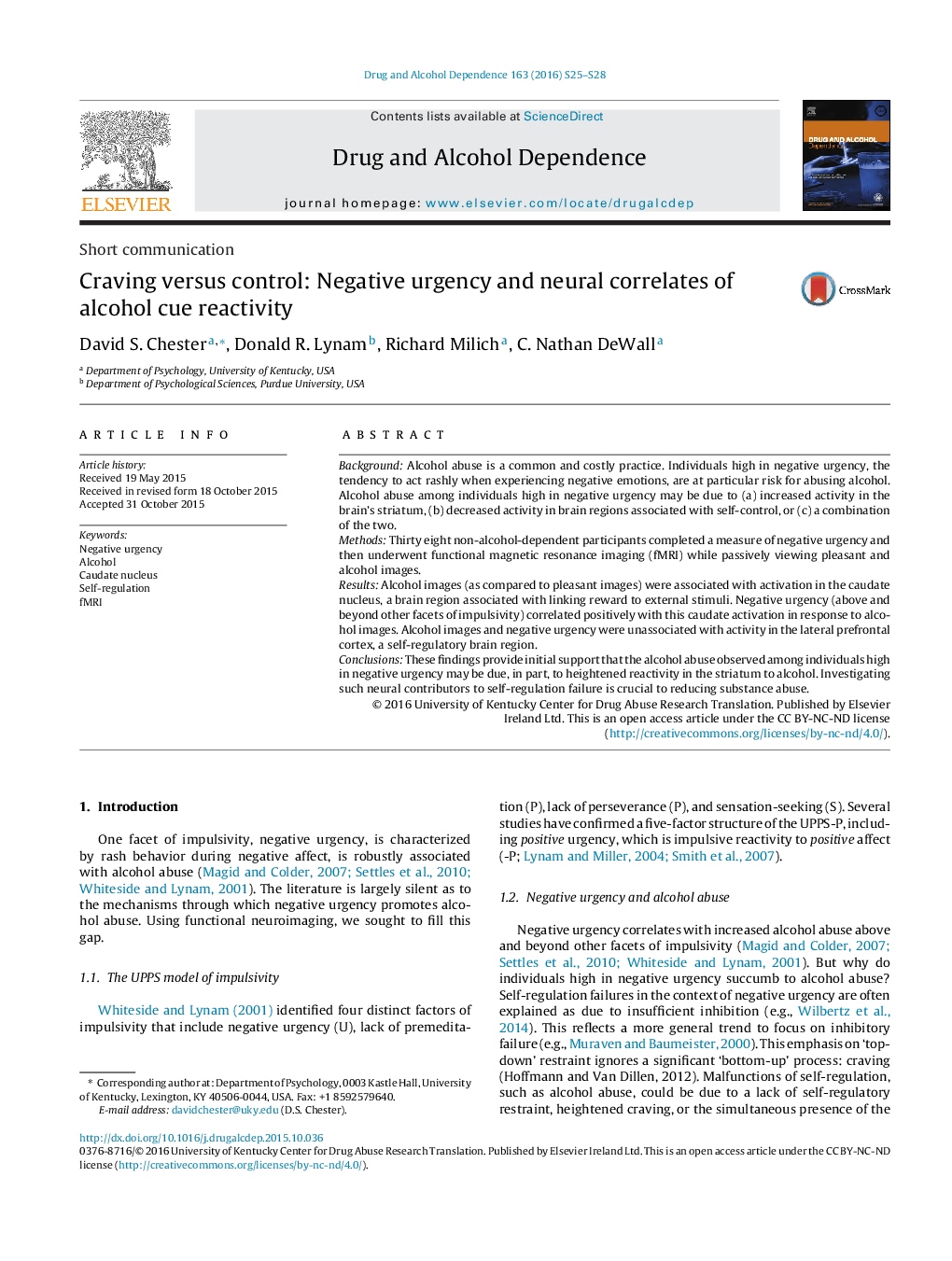| Article ID | Journal | Published Year | Pages | File Type |
|---|---|---|---|---|
| 1069690 | Drug and Alcohol Dependence | 2016 | 4 Pages |
•Negative urgency is associated with alcohol abuse yet the mechanisms remain unknown.•Negative urgency correlated with greater caudate nucleus activity to alcohol cues.•Negative urgency’s relation to alcohol abuse may be due to greater alcohol craving.
BackgroundAlcohol abuse is a common and costly practice. Individuals high in negative urgency, the tendency to act rashly when experiencing negative emotions, are at particular risk for abusing alcohol. Alcohol abuse among individuals high in negative urgency may be due to (a) increased activity in the brain’s striatum, (b) decreased activity in brain regions associated with self-control, or (c) a combination of the two.MethodsThirty eight non-alcohol-dependent participants completed a measure of negative urgency and then underwent functional magnetic resonance imaging (fMRI) while passively viewing pleasant and alcohol images.ResultsAlcohol images (as compared to pleasant images) were associated with activation in the caudate nucleus, a brain region associated with linking reward to external stimuli. Negative urgency (above and beyond other facets of impulsivity) correlated positively with this caudate activation in response to alcohol images. Alcohol images and negative urgency were unassociated with activity in the lateral prefrontal cortex, a self-regulatory brain region.ConclusionsThese findings provide initial support that the alcohol abuse observed among individuals high in negative urgency may be due, in part, to heightened reactivity in the striatum to alcohol. Investigating such neural contributors to self-regulation failure is crucial to reducing substance abuse.
